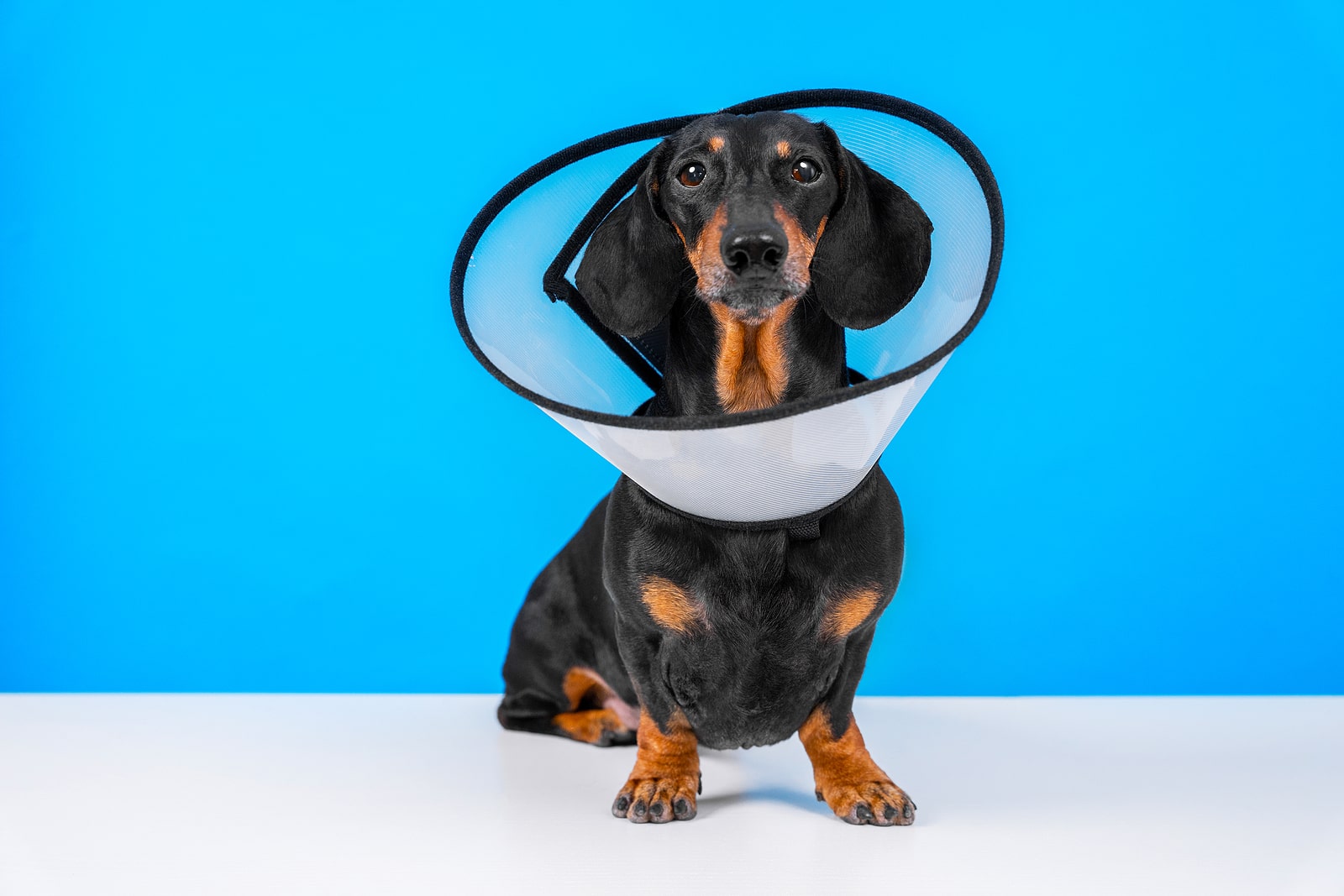How to Take Care of a Dog After Surgery
If your dog must undergo surgery for any reason, you should be prepared to provide extra care and attention during the following days. While a dog's surgery typically involves an invasive procedure that requires recovery on its own, a dog's anesthesia recovery can be a longer and more gradual process than what humans experience, due to the increased effects of anesthesia in pets.
During this recovery process, you may notice behavioral changes or other physical developments that raise concerns about your dog's recovery. Some of these changes are normal and to be expected in your dog after anesthesia and surgery, but others could be signs of complications and require additional medical treatment.

Here are some guidelines and tips to prep dog owners for what to expect from dogs after surgery, and how to properly care for them to support a quick, healthy recovery.
How Long Does Sedation Last in Dogs?
If your dog is sedated for a surgical procedure, the vet will monitor your dog as it awakens from anesthesia to make sure their recovery is off to a good start. You can expect your dog to still be in a fog when you bring it home from the hospital or clinic. It's normal for dogs to be wobbly-legged and/or nauseous in the day following a surgical procedure. Vomiting may also occur.
In terms of how long does dog anesthesia take to wear off completely, the typical time span is between 24 and 48 hours. During this time, your dog may continue to seem drowsy or low energy. You may also notice your dog shaking after orthopedic surgery or any other surgery—this can be a common side effect of sedation, and should go away within 48 hours. If the effects of sedation continue to linger after 48 hours, or if you have any concerns about your dog's recovery, don't hesitate to contact your vet.
Caring for Your Dog After Surgery: What to Expect
Once the vet checks your dog's vital signs and deems it safe to return home, you will be given a set of home care instructions specific to your dog's procedure. This may include instructions for cleaning the dog's surgical wound site, dietary restrictions or other information. Always follow the care instructions provided by your vet.
In addition to these home care instructions, you will likely want to take the following steps to properly care for your dog—and maximize their comfort as they recover:
- Set up a quiet, comfortable space where they can rest in peace. This could be their kennel or another area where your dog can recover while feeling secure. You may want to keep them away from other pets and children as they recover, to minimize their stress during this process—and to avoid unnecessary aggravation of their surgical site.
- Keep your dog indoors except when going to the bathroom. Monitor outdoor trips and consider carrying them up and down stairs if their mobility is limited. In some cases, you might prefer to set up potty pads indoors to give your dog an easier option for relieving themselves during their recovery.
- Stick to the schedule when administering pain relievers and other medication. These medications will aid in recovery and reduce your dog's discomfort through this process. Missed medications can lead to unnecessary suffering and complications, while overdosing can put your dog's health in jeopardy.
- Monitor the surgical site for abnormal developments. Surgical sites take time to heal, but swelling, oozing and other developments could be a sign that the site is not healing properly. This could be due to several reasons, including irritation at the surgical site—caused by a dog's scratching or biting, for example—or other issues not obvious to the owner.
- Bring your pet to their follow-up appointment. If the vet wants to schedule a follow-up appointment with your dog, attend this appointment even if you think your dog is doing fine. The vet may notice symptoms or signs of complications that you may have missed—and faster detection will lead to better outcomes for your dog.
How to Spot Signs of Infection After Surgery
With proper care, most dog surgeries are completed without any post-surgery complications. When infections do occur, though, they need to be taken seriously and treated by a vet. Dog owners should be on the lookout for the following signs of infection after surgery:
- Continued bleeding or oozing from the surgical site
- Pus leakage from the surgical site
- Intense redness or swelling
- Heat at the surgical site
- Signs of pain in your dog that seem to be progressing
- Rancid or unpleasant smells at the surgical site
If any of these symptoms develop, assume your dog has an infection and seek medical care immediately.
With proper care and time to heal, your dog's surgery should lead to a full recovery and a better quality of life. Give your dog a little extra attention and space to heal and monitor their behaviors closely to make sure their stay on track with their recovery.
FAQ:
1. How should I prepare my home for my dog's recovery?
Ensure a quiet, comfortable space for your dog to rest. Remove obstacles, keep their bed low to the ground, and provide easy access to food and water.
2. How long does it take for a dog to recover from surgery?
Recovery time varies based on the procedure. Minor surgeries may take a few days, while major surgeries can take weeks. Your vet will provide specific guidelines.
3. How do I prevent my dog from licking or biting their stitches?
Use an Elizabethan collar (E-collar) or a surgical recovery suit to prevent your dog from interfering with the incision site.
4. Can I bathe my dog after surgery?
Avoid bathing your dog until the vet gives approval, typically after the stitches or staples are removed, which can be 10-14 days post-surgery.
5. What should I feed my dog after surgery?
Start with small, bland meals like boiled chicken and rice if your dog has an upset stomach. Gradually return to their regular diet as their appetite improves.
6. How do I know if my dog is in pain after surgery?
Signs of pain include whining, restlessness, loss of appetite, reluctance to move, or excessive licking at the incision site. Contact your vet if you notice these symptoms.
7. When can my dog resume normal activities?
Follow your vet's advice on exercise restrictions. Most dogs need to avoid running, jumping, and rough play for at least 10-14 days.
8. How often should I check my dog's incision?
Check the incision at least twice a day for redness, swelling, discharge, or an unpleasant odor. If you notice any of these, contact your vet immediately.
9. What should I do if my dog refuses to eat after surgery?
Mild appetite loss is normal, but if your dog refuses to eat for more than 24 hours, consult your vet. Offering small amounts of tasty food may help.
10. How do I give my dog medication after surgery?
Follow your vet's dosage instructions carefully. Hide pills in treats, mix with food, or use a pill dispenser if needed. Never skip a dose.
11. Can my dog go outside after surgery?
Keep outdoor time brief and always on a leash to prevent excessive activity or exposure to dirt and bacteria that could infect the wound.
12. What signs of infection should I watch for?
Look for increased redness, swelling, pus, bad odor, or your dog excessively licking the wound. Fever and lethargy can also indicate infection. Contact your vet if you suspect an issue.
13. Is it normal for my dog to sleep a lot after surgery?
Yes, anesthesia and pain medication can cause drowsiness. However, if your dog seems overly weak, unresponsive, or disoriented for more than 24 hours, contact your vet.
14. What should I do if my dog's stitches come out?
If stitches come loose or the wound opens, keep your dog calm and contact your vet immediately for further instructions.
15. How can I help my dog stay calm during recovery?
Provide a quiet environment, engage in gentle petting, and offer puzzle toys or chew treats to keep them mentally stimulated without too much movement.


